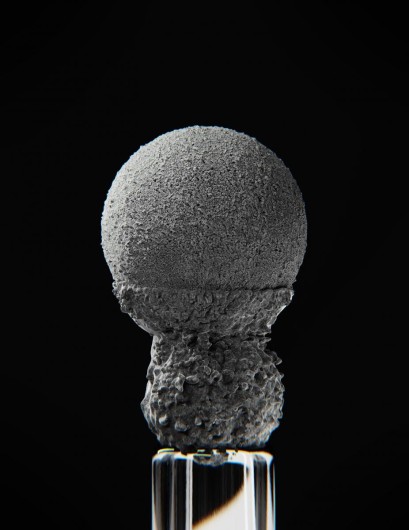Phagocytosis hits the front page of Biophysical Journal
 A white blood cell placed at the end of a glass micropipette engulfs a body it identifies as an intruder (artist's impression). Crédit : Julien Husson, julien.husson[at]ladhyx.polytechnique.fr, https://cellmechanics.jimdofree.com
A white blood cell placed at the end of a glass micropipette engulfs a body it identifies as an intruder (artist's impression). Crédit : Julien Husson, julien.husson[at]ladhyx.polytechnique.fr, https://cellmechanics.jimdofree.com
White blood cells are the body's first line of defence of the immune system. In particular, neutrophils are able to literally eat intruders during a process called phagocytosis. While there are chemical aspects to this process, its mechanical aspects are not yet fully understood. This problem was at the heart of Alexandra Zak's thesis, under the supervision of Julien Husson at the Hydrodynamics Laboratory at École Polytechnique (LadHyX*) and Oliver Nüsse at the Physical Chemistry Institute at Université Paris-Saclay. These latest results are featured on the front page of Biophysical Journal.
To study the mechanics of white blood cells, the team developed a rheometer, a device capable of measuring the deformation of a single cell. A neutrophil is first sucked into the end of a glass micropipette. Then a microbead placed at the end of a very thin glass rod is brought up against the neutrophil. By observing the bending of the glass rod and the deformation of the cell under the microscope, it is possible to deduce its mechanical properties such as stiffness or viscosity. In addition, the microbeads used in the experiments are coated with antigens that "activate" neutrophils, thus triggering phagocytosis.
Stiffening and spreading
In a previous paper, the team showed that white blood cells become more rigid when they attack. However, the scientists did not know if this stiffening was coordinated with the spreading of the white blood cell as it engulfs its target. This stiffening could even be a problem by making it more difficult to spread and thus limiting the size of targets that can be swallowed. Studies carried out by other teams gave contradictory results.
The study published in Biophysical Journal clarifies some of the issues by showing that for relatively small microbeads (8 micrometres in diameter, whereas a neutrophil is about 10 micrometres), the spreading of the white blood cell tends to precede its stiffening. In contrast, for larger beads (20 micrometres), spreading and stiffening tend to occur simultaneously. Finally, the researchers showed that the maximum spreading surface of neutrophils is not limited by stiffening but by their membrane total surface, which cannot encompass the entire target if it is too large. Nevertheless, the role of this stiffening in the phagocytosis process, and in the activity of white blood cells in general, remains to be explored.
*LadHyX: a joint research unit CNRS, École Polytechnique - Institut Polytechnique de Paris
 Support l'X
Support l'X